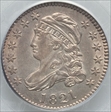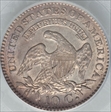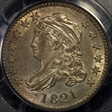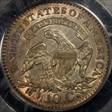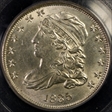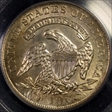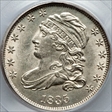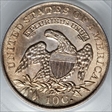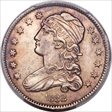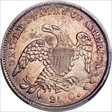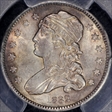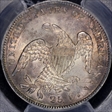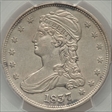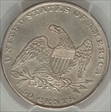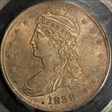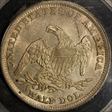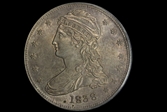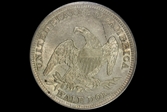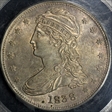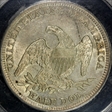The Kankakee Collection 的钱币相册
JR-9. The 83 in the date are repunched. This sharply struck and lustrous representative has a brilliant obverse. The reverse displays light olive-green and lavender shades.
JR-9. The 83 in the date are repunched. This sharply struck and lustrous representative has a brilliant obverse. The reverse displays light olive-green and lavender shades.
JR-9. The 83 in the date are repunched. This sharply struck and lustrous representative has a brilliant obverse. The reverse displays light olive-green and lavender shades.
JR-9. The 83 in the date are repunched. This sharply struck and lustrous representative has a brilliant obverse. The reverse displays light olive-green and lavender shades.
B-2 (Browning). This lovely Select Mint State example is tied for the eighth finest according to the Rea-Koenings-Haroutunian Condition Census that is presented in Early Quarter Dollars of the US Mint (2010). The obverse is cracked from the hair curl to the three lowest stars on the right, apparently as always. This variety was produced before 1832 B-1. Both sides exhibit frosty mint luster with delicate gold, champagne, and steel toning on the ivory surfaces. Population: 13 in 63, 16 finer
B-2 (Browning). This lovely Select Mint State example is tied for the eighth finest according to the Rea-Koenings-Haroutunian Condition Census that is presented in Early Quarter Dollars of the US Mint (2010). The obverse is cracked from the hair curl to the three lowest stars on the right, apparently as always. This variety was produced before 1832 B-1. Both sides exhibit frosty mint luster with delicate gold, champagne, and steel toning on the ivory surfaces. Population: 13 in 63, 16 finer
B-2 (Browning). This lovely Select Mint State example is tied for the eighth finest according to the Rea-Koenings-Haroutunian Condition Census that is presented in Early Quarter Dollars of the US Mint (2010). The obverse is cracked from the hair curl to the three lowest stars on the right, apparently as always. This variety was produced before 1832 B-1. Both sides exhibit frosty mint luster with delicate gold, champagne, and steel toning on the ivory surfaces. Population: 13 in 63, 16 finer
B-2 (Browning). This lovely Select Mint State example is tied for the eighth finest according to the Rea-Koenings-Haroutunian Condition Census that is presented in Early Quarter Dollars of the US Mint (2010). The obverse is cracked from the hair curl to the three lowest stars on the right, apparently as always. This variety was produced before 1832 B-1. Both sides exhibit frosty mint luster with delicate gold, champagne, and steel toning on the ivory surfaces. Population: 13 in 63, 16 finer
A luminous and richly toned example from the first year of the HALF DOL. reverse subtype. Apricot, peach, rose-violet, and blue hues mingle on each side, and a streak of deep toning descends from the word OF to the eagle's right (facing) wing
A luminous and richly toned example from the first year of the HALF DOL. reverse subtype. Apricot, peach, rose-violet, and blue hues mingle on each side, and a streak of deep toning descends from the word OF to the eagle's right (facing) wing
A luminous and richly toned example from the first year of the HALF DOL. reverse subtype. Apricot, peach, rose-violet, and blue hues mingle on each side, and a streak of deep toning descends from the word OF to the eagle's right (facing) wing
A luminous and richly toned example from the first year of the HALF DOL. reverse subtype. Apricot, peach, rose-violet, and blue hues mingle on each side, and a streak of deep toning descends from the word OF to the eagle's right (facing) wing
A luminous and richly toned example from the first year of the HALF DOL. reverse subtype. Apricot, peach, rose-violet, and blue hues mingle on each side, and a streak of deep toning descends from the word OF to the eagle's right (facing) wing
A luminous and richly toned example from the first year of the HALF DOL. reverse subtype. Apricot, peach, rose-violet, and blue hues mingle on each side, and a streak of deep toning descends from the word OF to the eagle's right (facing) wing




















